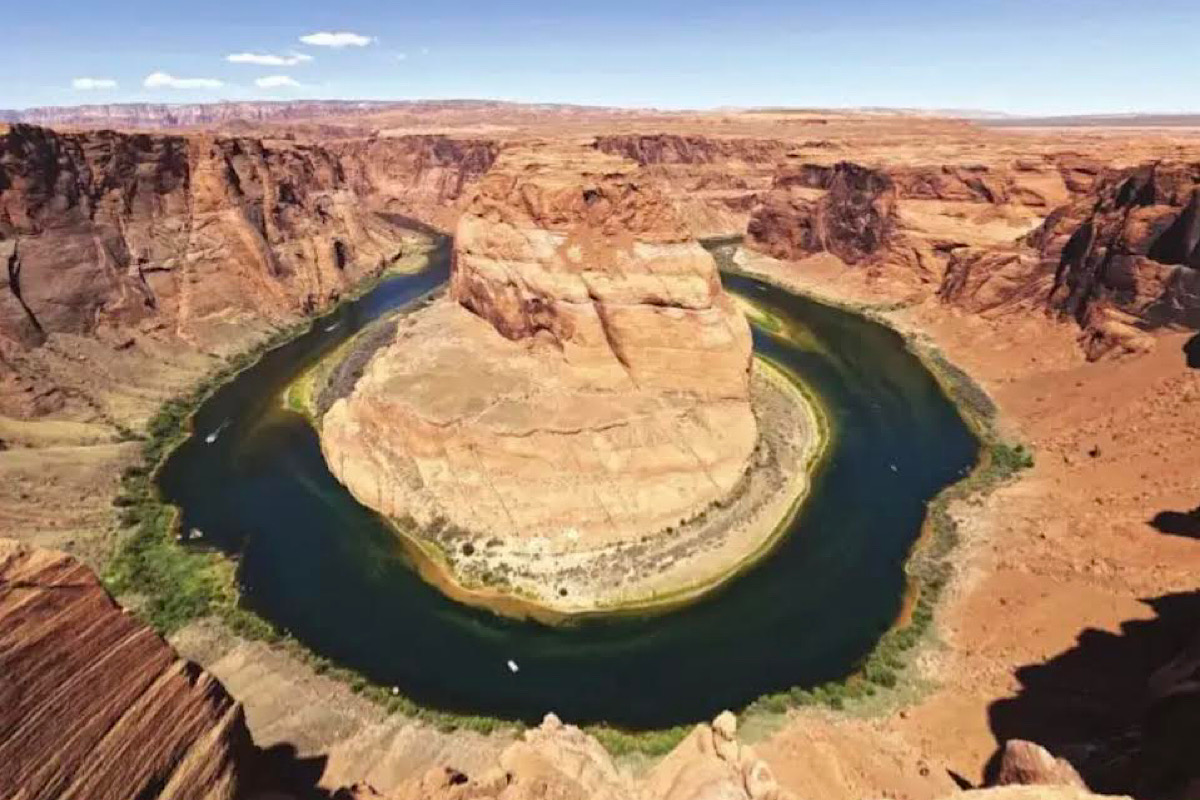The conflict over the Colorado river water among American states has not received much attention in India. Yet, it holds immensely valuable lessons as we implement river interlinking and water-sharing plans throughout the country.
The crisis over the sharing of Colorado river waters in the United States is as much as product of skewed legal precedents as erratic weather patterns unleashed by climate change and holds lessons about climateproofing planning processes as well as subscribing to precautionary principles and due diligence to avoid the mismanagement of nature resources.
Advertisement
As the United States suffers its way through a massive drought, the thinning of the melting snow that feeds the Colorado River has resulted in the drying up of its main reservoirs, Lake Powell and Lake Mead.
This has reignited inter-state water sharing disputes among downstream and upstream river basin states, especially between Arizona and California.
The dispute is complicated by the increasing unworkability of the Law of the River that governs water allocation to the seven states, further complicated by the claims to water share made by indigenous communities with recognized water rights, justice considerations for indigenous communities without recognized legal water rights, as well as claims of Mexico.
When the Law was initially worked out in 1922 – allocating an equal water share of 7.5 million acrefeet to the three upstream and the four downstream states – it had overestimated the total river capacity, thereby creating a legal right to use more water than actually exists in the river.
The oversight may have been due to the fact that the states were not actually using the water, but simply had a legal right to do so – a situation which acquired complicated dimensions as consumption demands during drought increased.
Presently, due to the prolonged drought triggered partially by climate change, Colorado river is estimated have only about 12.4 million acre-feet, while excessive drawing of water by downstream states like Arizona and California has created an unviable situation, resulting in directives by Federal authorities to limit or cap the use of Colorado river water by individual states.
These restrictions will not only impact the local economy of the states, but also the rights of indigenous communities. Thus, in this way, a water-sharing crisis was created partially by climate change and partially by skewed governance and inter-state politics.
A similar debate has been underway in India in the context of the country’s river-interlinking and water-sharing projects, envisaged decades ago and now under implementation, with the first such project, the Ken-Betwa riverinterlinking project in Bundelkhand expected to be operationalized by around 2030. Such river-interlinking projects envisage transfer of water from water-surplus rivers to waterdeficit rivers, especially in areas with erratic monsoon patterns and vulnerability to drought, in order to expand the scope of irrigation.
Water availability to deficit areas is expected to accelerate agricultural productivity and lead to development. However, there are three caveats to bear in mind regarding such projects.
First, given the recent ongoing experience of the Colorado river, the impact of climate change cannot be overlooked. For this, it becomes necessary to not only conduct accurate hydrological surveys of river water capacity, but also take account of scientific predictions about the potentially detrimental effects of some such projects on monsoon patterns, as river interlinking projects create alterations in river ecology and impact the flow of water to oceanic systems, thereby leading to potential effects on monsoonal patterns.
Second, in the context of such projects, the policy trade-offs between climate change adaptation and deployment of large irrigation projects also come to the fore. It is unclear whether river interlinking policies can be conceived to be adaptive measures or developmental ones, and raises larger questions about what qualifies as adaptive measures.
At a time when India seeks to lead the global mobilization efforts on the issue of climate finance for adaptation, climate adaptation activities should, perhaps, be given greater fillip depending on local conditions.
For instance, in areas like Bundelkhand, the potential for climate adaptation should be harnessed by reviving traditional water-harvesting structures, cultivation of less water intensive crops and encouragement to alternate agricultural practices.
Third, in the Indian context, the aspect of the climate-security nexus becomes particularly significant. In the case of the Colorado river crisis, such security considerations were similarly on display in the inter-state dispute dimensions, such as the one between the lower basin states of Arizona and California. At some point, a few decades back, such disputes were not only confined to the legal domain, but even took the form of partial armed confrontations between the two states.
In India’s case, the sensitivity of water-sharing disputes, exacerbated by climate change, merits even greater attention; for, they are not simply confined to disputes between states.
Many of the rivers which are envisaged under the linking projects are also a part of larger river-water systems which have cross-border linkages to countries such as Bangladesh, Myanmar, Nepal and Pakistan. India is already anticipating future vulnerability regarding activities of upstream China in the case of Brahmaputra River. River water disputes with Bangladesh and Pakistan are also a consideration.
Such climate security issues related to water may exacerbate in some cases as India embarks on river-interlinking projects. Indeed, the country has kept many records of river-water capacity in northern basins classified due to their potential to evoke sensitive border disputes.
Given some of these considerations, it is worth looking closely at the examples before us from around the world and undertaking the necessary steps to climate-proof sensitive projects.
(The writer teaches at Vivekananda School of Law and Legal Studies, New Delhi, and is a member of Climate Change Expert Group at Vivekananda International Foundation, New Delhi. Views expressed are personal.)











